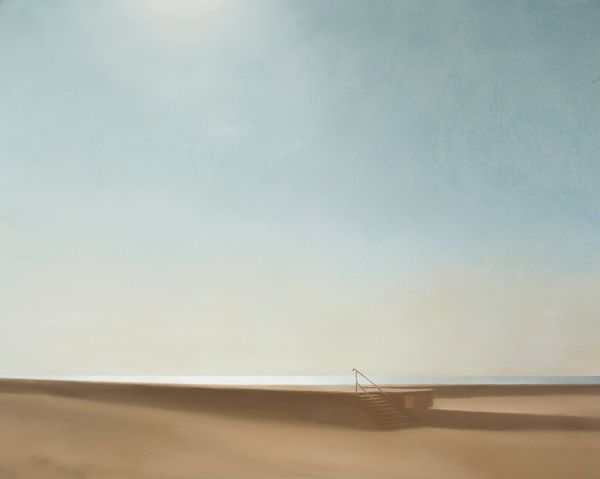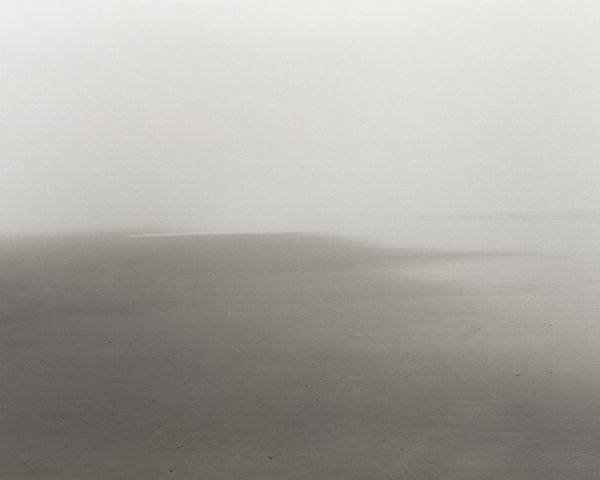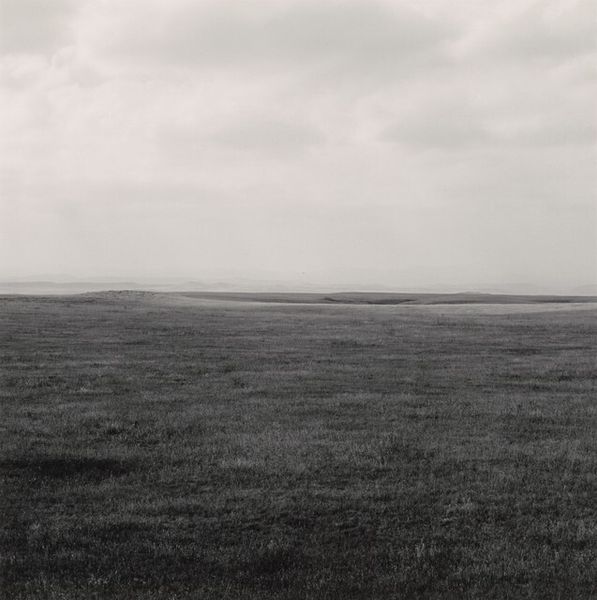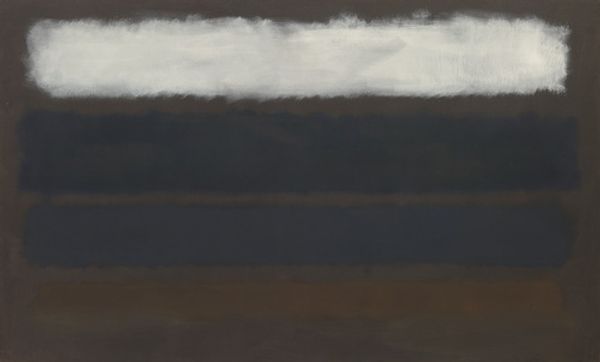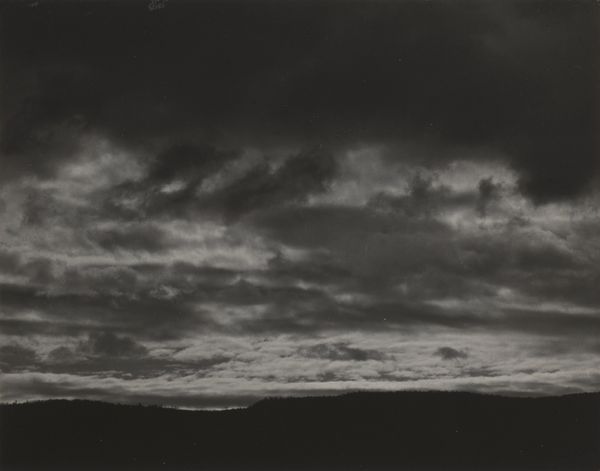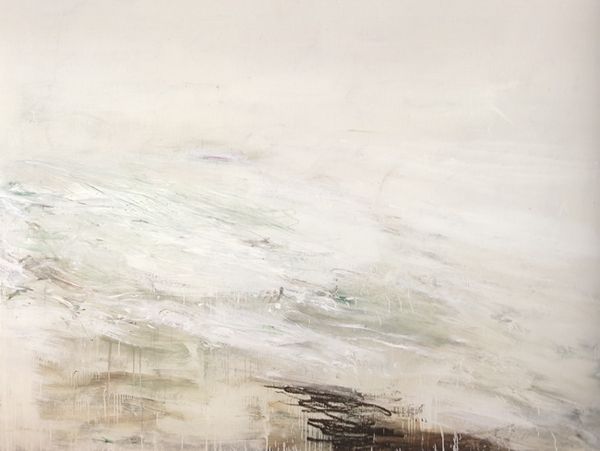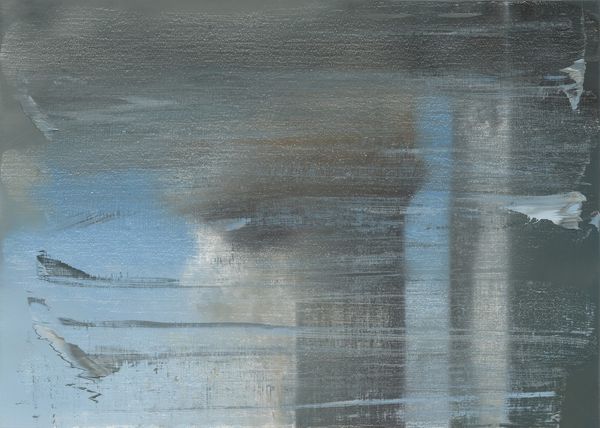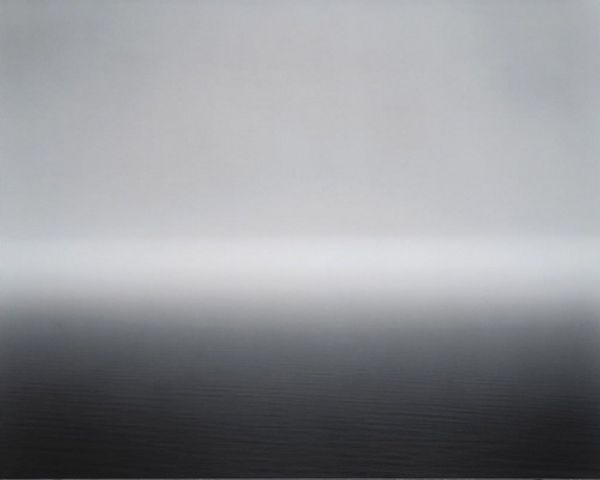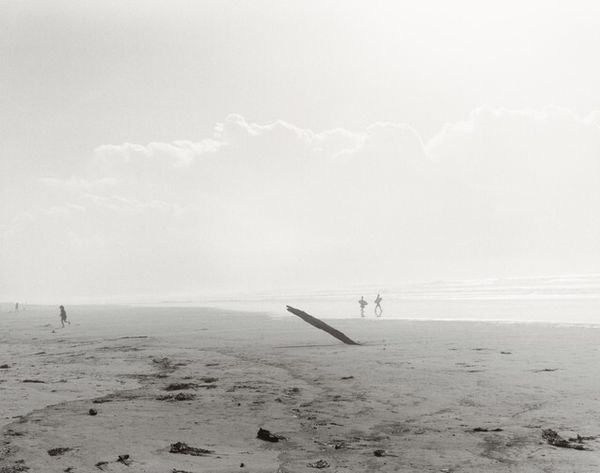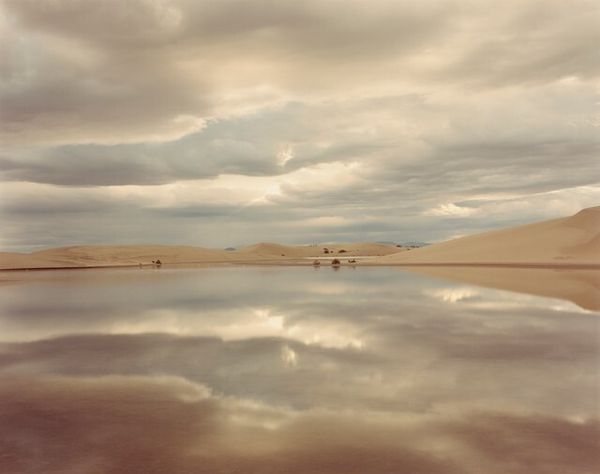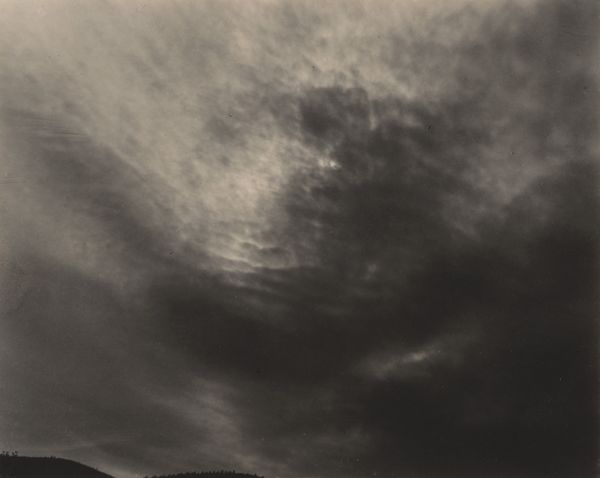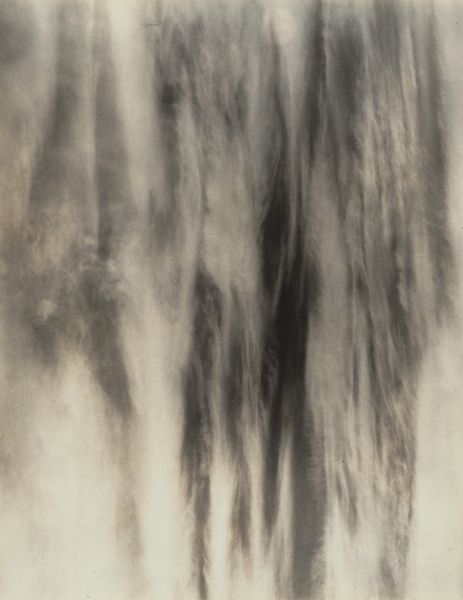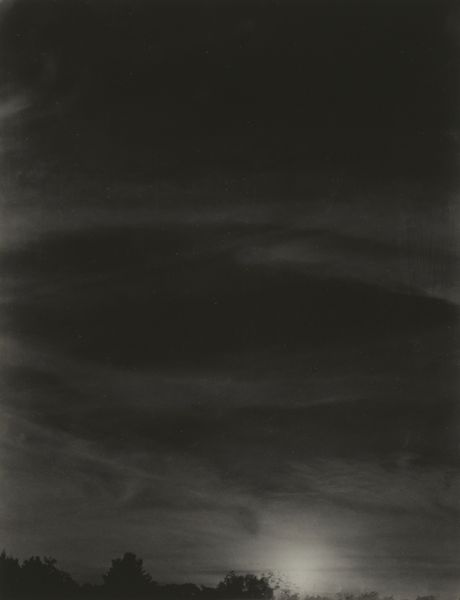
#
capitalist-realism
Copyright: Modern Artists: Artvee
Gerhard Richter made "Eifellandschaft" with oil on canvas, capturing a seemingly unremarkable landscape under a heavy sky. This work exemplifies Richter's engagement with the politics of imagery and the social conditions that shape artistic production in post-war Germany. The painting blurs the distinction between photography and traditional painting, a characteristic feature of Richter's work. Consider the grey, overcast atmosphere, a common sight in the Eifel region of Germany, yet also suggestive of the emotional climate of a nation grappling with its recent history. Richter was a founder of the art movement called Capitalist Realism, which challenged both Western consumerism and the socialist realism of the East. Historical records, personal accounts, and institutional archives provide invaluable context. We can interpret it as a meditation on the role of art in representing a landscape marked by both natural beauty and historical weight.
Comments
No comments
Be the first to comment and join the conversation on the ultimate creative platform.
